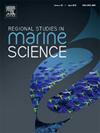利益相关者对海草生态系统服务及其威胁的看法在坦桑尼亚桑给巴尔群岛各不相同
IF 2.4
4区 环境科学与生态学
Q3 ECOLOGY
引用次数: 0
摘要
认识到海草草甸提供的生态系统功能和服务及其对不同环境和人为压力的脆弱性对于有效决策至关重要,特别是在资源依赖型地区。本研究探讨了生活在桑给巴尔三个不同海草草甸附近的利益相关者(当地社区)(Chwaka, Jambiani和Stone Town)如何感知和依赖海草生态系统服务(SES),他们的威胁和影响他们感知的因素。收集数据的方法包括参与性农村评价、住户问卷调查和实地观察。结果显示,这些地点的当地社区对SES的看法不一。供应服务(如鱼类供应)是最确定的SES,其次是调节服务(如海岸保护),支持服务(如鱼类苗圃)和文化服务(如生态旅游)。鱼类供应、苗圃栖息地和海岸保护被列为维持当地福祉最重要的SES。在所有预测因素中,靠近海岸、被调查者的主要职业和居住时间是影响当地社区对所有SES意识的显著因素。在Chwaka和Jambiani,不受管制的捕鱼行为、海胆过度放牧和海藻养殖被认为是海草损失的主要原因,而在Stone Town,海草退化归因于波浪活动增加和潮汐制度变化、不受管制的旅游(船锚)和污染。该研究的结论是,SES和影响海草生态系统的驱动因素的感知重要性取决于特定环境因素。这强烈强调了保护行为体需要提高对海草产生的多重效益的认识,恢复退化的地区,并针对海草草甸可持续管理的具体威胁制定解决方案。本文章由计算机程序翻译,如有差异,请以英文原文为准。
Stakeholders' perspectives on seagrass ecosystem services and their threats vary across Zanzibar archipelago, Tanzania
Recognizing the ecosystem functions and services provided by seagrass meadows and their vulnerability to different environmental and anthropogenic stressors is crucial for effective decision-making, especially in resource-dependent regions. This study explored how stakeholders (local communities) living in proximity to three distinct seagrass meadows in Zanzibar (Chwaka, Jambiani, and Stone Town) perceive and rely on seagrass ecosystem services (SES), their threats and factors influencing on their perception. Data were collected through a combination of methods, including participatory rural appraisal, household questionnaire surveys and field observations. Results revealed that local communities across these sites had mixed perceptions regarding SES. Provisioning services (e.g., fish provision) were the mostly identified SES, followed by regulating services (e.g., coastal protection), supporting services (e.g., fish nursery grounds), and cultural services (e.g., ecotourism). Fish provision, nursery habitats, and coastal protection were ranked as the most important SES for sustaining local well-being. Among all predictors analyzed, proximity to the shore, the main occupation of respondents, and residence time were significant factors that influenced the local communities' awareness of all SES. Unregulated fishing practices, overgrazing by sea urchins, and seaweed farming were perceived as the primary causes of seagrass loss in Chwaka and Jambiani, while in Stone Town, seagrass degradation was attributed to increased wave activity and changing tidal regimes, unregulated tourism (boat anchoring), and pollution. The study concludes that the perceived importance of SES and the drivers impacting seagrass ecosystems vary depending on context-specific factors. This strongly emphasizes the need for conservation actors to increase awareness of the multiple benefits generated by seagrasses, restore degraded areas, and devise solutions tailored to specific threats for sustainable management of seagrass meadows.
求助全文
通过发布文献求助,成功后即可免费获取论文全文。
去求助
来源期刊

Regional Studies in Marine Science
Agricultural and Biological Sciences-Ecology, Evolution, Behavior and Systematics
CiteScore
3.90
自引率
4.80%
发文量
336
审稿时长
69 days
期刊介绍:
REGIONAL STUDIES IN MARINE SCIENCE will publish scientifically sound papers on regional aspects of maritime and marine resources in estuaries, coastal zones, continental shelf, the seas and oceans.
 求助内容:
求助内容: 应助结果提醒方式:
应助结果提醒方式:


